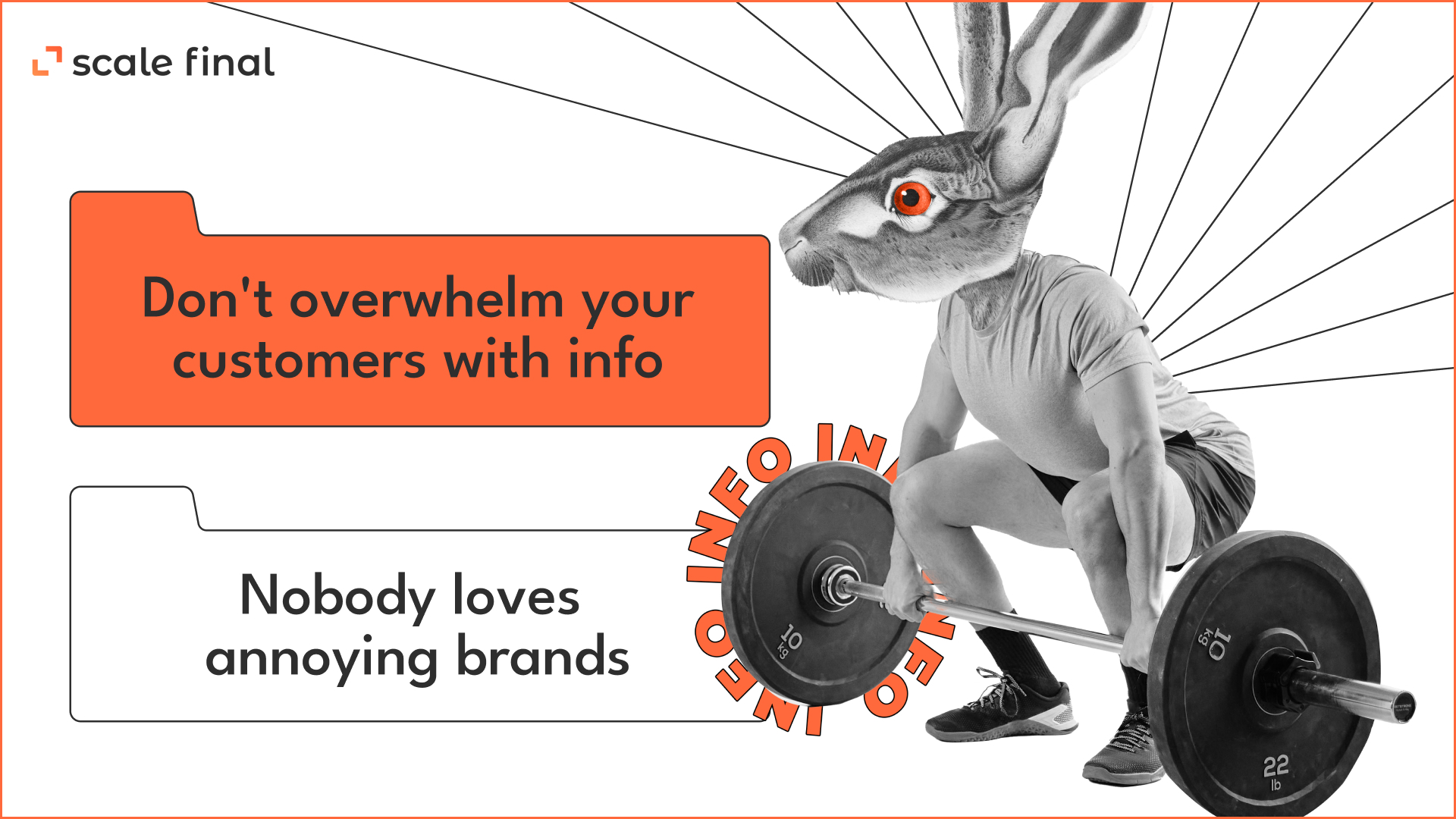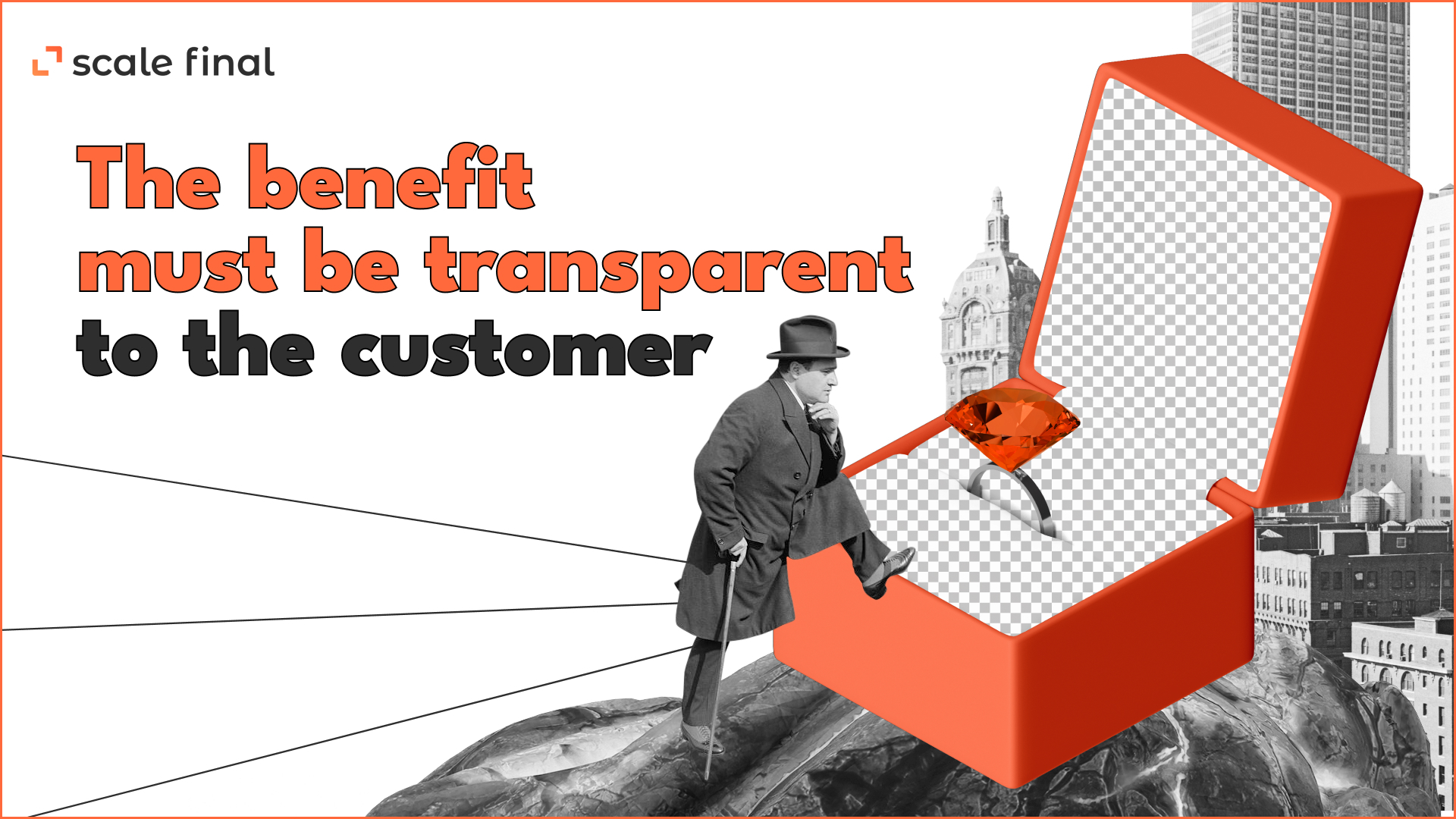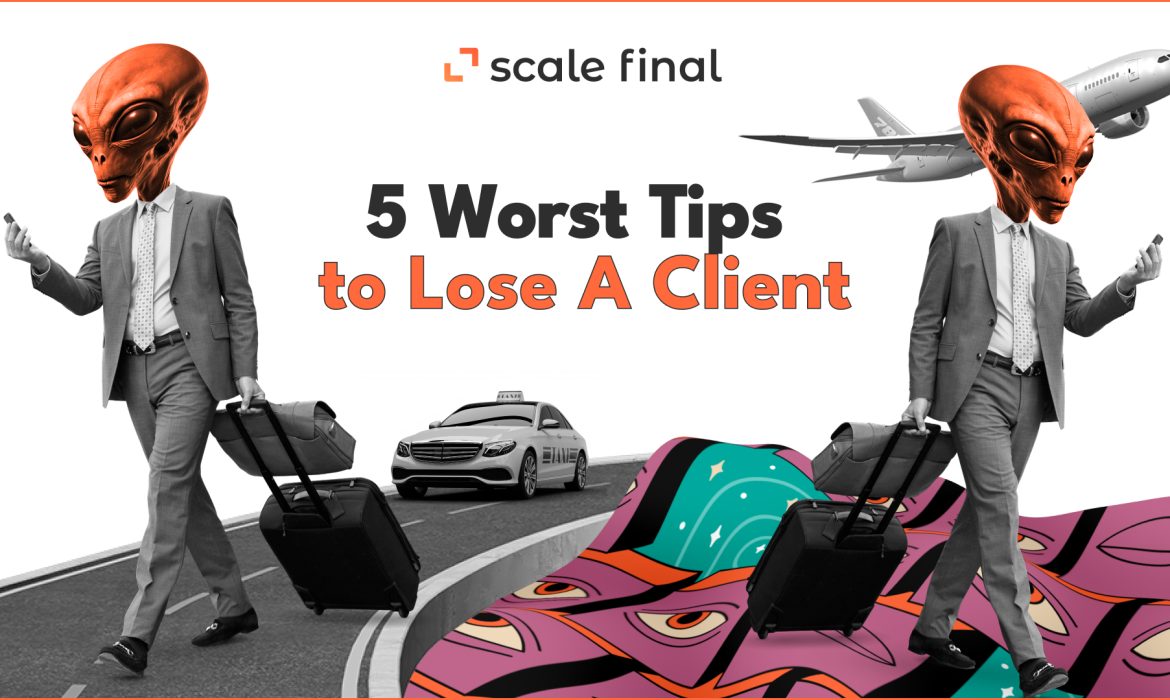Home • Blog • 5 worst tips to lose a client
5 worst tips to lose a client
The simple truth about our customers is that they expect us to meet their expectations. Those are the things we put on this list. On the surface, these things were actually made to please.
Things like bombarding customers with daily emails and notifications, a clumsy and unclear loyalty system, and constant discounts are things that will surely make them leave us.
We won’t deal with things that are clearly a no-no, like unprofessionalism, lack of support, shaggy products, and overall poor customer service.
Remember to put the customer first no matter what, and the next time something goes wrong, ask yourself twice what happened before you get angry.
In the last post, How To Drive Traffic To Your Landing Pages Like A Boss, we mentioned email campaigns as an essential tool in your marketing strategy.
Now we’ll detail what you should avoid at all costs.
A little spoiler: All failures are about contact frequency, logic, and the rewards program. But even these aren’t so simple.
Morning bomb
You pick up the phone, go to email, and everything piles up again. Everyone knows these brands that constantly send some offers and updates.
You delete emails like that every morning. “Select, delete, mute, unsubscribe.” Though this unsubscription sometimes can be damn tricky, and you get more of them. Putting the emails in spam can also work.
So, dear business owners, please consider this. Don’t overwhelm your customers with info. Ensure you don’t get forgotten, but if you bombard them, you’ll only hurt your bottom line, and customers will leave. Nobody loves annoying brands.

As mentioned earlier, you should work on offboarding your customers. Please don’t make it challenging when a customer wants to leave. By making the departure pleasant and unobtrusively collecting feedback, you can adapt and grow.
I want your money
What is wrong with the following?
“We want customers to choose us. So they don’t leave us for competitors who have lower prices. We offer a loyalty program. But we only send out emails with discounts.”
It’s not hard to guess. Communication is key. If you only communicate with customers when you offer to buy something, you’re literally sending a message, “I want your money.”
Also, if you only communicate product discounts, your product will lose value over time. And your brand will go down with it.

There are so many other reasons to communicate.
What you should do instead:
- Tell stories about new collections, events
- Share the story of the brand
- Compile useful lists
- Show live stories
- Highlight details about bonuses
And it can go on and on. Be creative. The more conversation beyond money, the stronger your relationship with your customers.
Loyalty program to confuse
It’s propelling why some complicate the basic terms of the loyalty program. You may not believe it, but it still happens: 1 bonus = $1, right? Some have decided that it doesn’t. Why should 15 bonuses = 1$? So that customers don’t forget how to do the math? Or to confuse them, so they don’t guess how many bonuses they get and how much they can save spending them? The benefit must always be transparent to the customer.

The real fun begins with level loyalty programs. That’s when your base discount can go up. For example, in the beginning it was 3%, but it can be 5, 7 or even 15%! The only thing you don’t understand is how to increase it. How often do you have to buy?
How many purchases do you need to make? Or do you have to leave feedback about the company somewhere?
Then your customers will ask themselves these questions: If I don’t know how to get more, what’s the point of using that discount? Maybe there is another brand that has a better offer? This is how loyal customers leave…
Harder, better, faster, stronger
If you want to increase the average check, you could come up with the idea of gifting your customers. For example:
“Everyone gets a small gift after buying $99 worth of products”
But the current average check is $29.
Come on, who wants to get a small gift when they pay three times the usual amount? Especially when the cost of the gift is nothing compared to the expense.
Okay, that’s the obvious part. Now the non-obvious part. In addition to the current average check, you also need to consider frequency. If a customer has made a recent purchase, they’re more likely to be upset when they see a promotion like this. Had they known, they’d have waited and gotten more gifts for their purchases. They certainly won’t order again for a larger amount right away.
So, in this case, it would make sense to highlight the segment of those who haven’t bought anything for a long time.

Unprecedented generosity
Now we’re talking about brands that give their customers too many bonuses. Do you have an endless supply of dollars? Is the money in your pocket tight? If so, you’d better invest it in developing your brand or in cryptocurrencies.
But seriously, it’s unlikely that customers will notice this mistake in your communication strategy.
And it’s also unlikely that they’ll appreciate your generosity.
You get used to everything, including receiving 100 bonuses per check. But the damage to the budget and revenue is significant.
Think about it: how many bonuses do you give? How many are you allowing to be written off? How much revenue have you already lost?
And the most important question: Are you afraid that customers will leave if you give less?
The number of bonuses should be calculated. It’s a reasonable thing related to the average check.
Quick summary
The logic of the loyalty program should be clear to your clients and should be based on their convenience. The frequency of contact should correlate with the frequency of purchases. The number of bonuses should be calculated taking into account the average check.

Otherwise, they aren’t newsletters, but chaotic, annoying chatter about discounts.
Author
-
 Product Manager
Product ManagerI'm equal parts strategic thinker and creative doer, with over 6 years of experience in digital marketing. I started out as a creative copywriter, and now I'm all in product management. Fun, inspiring and slightly caffeinated.
View all posts






